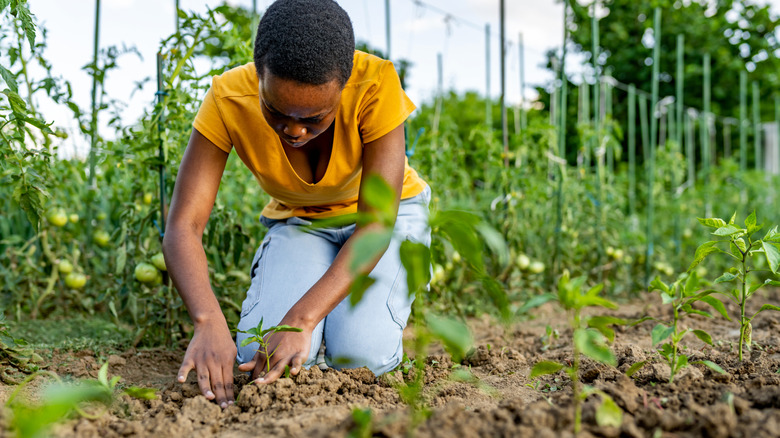Your Growing Zone May Have Changed - Here's What It Means For Your Garden
What is a USDA growing zone, and which one are you in? The answer to one of these questions may be different than what it was only a few years ago. USDA growing zones, in general, help you know which plants are best suited for the climate in your area. To get to the nitty gritty, USDA zones tell you the average coldest temperatures in your regions and when your typical first and last frost dates are.
With the help of Oregon State University's PRISM Climate Group, the USDA updated its plant hardiness zone map in 2023 for the first time since 2012. The fresh-cut version accounts for changes in weather patterns but also features more detailed information than past versions. It's pretty likely that you've noticed shifts in growing trends over the last decade or even less, but have you delved into how that will affect your own garden from here on out?
PRISM Climate Group's director, Chris Daly, shared with NPR that the updated map accounts for increases of an average of 2.5 degrees Fahrenheit between 2012 and 2023. Rising temperatures aside, the 2023 map is certain to be more accurate than past versions, since it gathered data from nearly twice as many weather stations as it did for the 2012 map. About half of the country has changed to a warmer half zone, so your choice of seeds and starts this spring could be different from past years.
Zoom in on your zone
If you haven't consulted the new-and-improved map, now's a great time to do this. The 2023 USDA Hardiness Zone Map puts a figurative magnifying glass over your area with the help of your zip code, providing you with subtle temperature ranges. The map still divides the U.S. into 13 zones, and each one is sliced further into half zones, A and B. The newest crop of data shared on the USDA zone map will tell you if your neck of the woods has experienced enough of a temperature change to affect what you choose for your garden and yard. You may be able to transition from starting seeds indoors to direct sowing due to a longer growing season. However, you may discover that some of your tried and true plant varieties aren't up to the new conditions.
Global warming is scary, but we can make lemonade from lemons while we continue to do our part to slow its progress. Keep fighting climate change from your garden, but tuck in some new plants to see how they fare. Weather is fickle, so just because you've moved from zone 7B to 8A, it's not a guarantee that new plant varieties will succeed. Take the opportunity to experiment, and record the results. Gardening journals in any form are a smart tool for noting changes in temperatures and crop results. Use it to record frost dates, summer highs, seed varieties you grew, and how well they did. By comparing your findings year to year, you'll see how and if your own plot has changed and how you need to respond.

